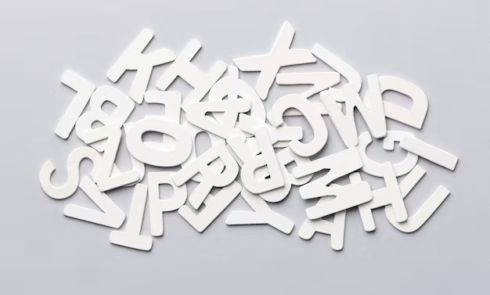Are you looking to revamp your website with a dynamic and eye-catching feature? Look no further than a web carousel! This popular design element has become a staple in modern web design, allowing businesses to showcase their products, services, and latest updates in an interactive and visually appealing manner.
In this comprehensive guide, we will take a deep dive into the world of web carousels. We’ll explore the different types of carousels, discuss their benefits and drawbacks, and provide you with expert tips and best practices for creating an effective and engaging carousel for your website. So, whether you’re a seasoned designer or just starting out, this article is a must-read for anyone looking to incorporate a web carousel into their website.
What are the Different Types of Web Carousel Designs?
Before we delve into the detailed aspects of rotating display design, let’s first understand the different types of rotating displays that exist. While all rotating displays essentially serve the same purpose, their functionality and layout can differ significantly. Let’s examine the three most common types:
Image Rotating Displays
These displays consist of a series of images that rotate automatically, allowing users to view multiple visuals within one space. They are ideal for businesses that wish to showcase their products, portfolio, or latest updates in a visually appealing manner. Examples include photo sliders, hero banners, and product galleries.
Image rotating displays are highly versatile and can be customized to fit any design aesthetic. They excel at capturing users’ attention and encouraging interaction. However, navigating through these displays can be challenging on mobile devices, and they may impact page load times if not optimized properly.
Dynamic Content Displays
Dynamic content displays function similarly to visual slideshows, but instead of solely images, they exhibit a blend of text and multimedia content such as videos or audio clips. These displays are favored for featuring blog entries, case studies, or client testimonials, enhancing user engagement and prolonging time spent on the site.
A key advantage of these displays is their ability to present ample information in a streamlined manner, preventing page clutter. Nonetheless, they might not align with every content type and could pose accessibility challenges if not crafted with care.
Integrated Media Displays
Integrated media displays merge the capabilities of visual slideshows and dynamic content displays, offering a platform for showcasing diverse media types within a unified framework. These displays are particularly beneficial for businesses aiming to deliver a more engaging and interactive experience to their audience. Examples include virtual tours, interactive product demonstrations, and engaging timelines.
Such displays are known for their ability to captivate and make a memorable impact on users. However, they demand a more sophisticated technical understanding and might not integrate well with every website’s structure.

What are the Best Practices for Web Carousel Design?
Now that we have a better understanding of the different types of carousels, let’s dive into some best practices for designing an effective and visually appealing web carousel.
- Keep It Simple: When it comes to carousels, less is often more. Avoid overcrowding your carousel with too much content or too many visuals. Stick to a maximum of six slides to prevent overwhelming your audience. Remember, the purpose of a carousel is to highlight key information or products, not bombard users with endless options;
- Optimize for Mobile: With more and more people accessing the internet through their mobile devices, it’s crucial to ensure your carousel is optimized for smaller screens. Consider using responsive design techniques to ensure your carousel displays properly on all devices. You may also want to consider implementing touch gestures for easy navigation on touchscreens;
- Use High-Quality Visuals: Whether you’re using images or videos in your carousel, make sure they are of high quality. Blurry or pixelated visuals can make your website appear unprofessional and may deter users from interacting with your carousel. If possible, use professional photography or video footage to give your carousel a polished look;
- Keep Navigation Intuitive: User-friendliness should be a top priority when designing a web carousel. Make sure the navigation buttons or indicators are easy to find and understand. Avoid using symbols or icons that may confuse users and stick to simple arrows or dots. Additionally, consider implementing autoplay and pause features to give users more control over their browsing experience;
- Consider Accessibility: It’s essential to consider accessibility when designing any element of a website, and carousels are no exception. Make sure your carousel is compatible with screen readers and follows proper HTML structure. Also, provide an alternative option for users who may have difficulty navigating through the carousel, such as a static image or text link;
- Test, Test, Test: As with any design element, it’s crucial to test your carousel thoroughly before launching it on your website. Check for compatibility across various browsers and devices, and make sure it functions as intended. It’s also a good idea to gather feedback from a few users to identify any potential issues or areas for improvement.

What are the Common Mistakes to Avoid in Web Carousel Design?
While carousels can be a powerful tool for engaging users, they can also backfire if not designed and implemented correctly. Here are some common mistakes to avoid when designing a web carousel:
1. Not Using It for the Right Reasons
Before incorporating a carousel into your website, ask yourself if it serves a purpose or if you’re just using it because it’s trendy. If a carousel doesn’t add value to the user experience or align with your business goals, it may be best to leave it out.
2. Including Too Many Slides
As mentioned earlier, less is often more when it comes to carousels. Having too many slides can overwhelm users and decrease their engagement with the feature. Stick to a maximum of six slides, and make sure each slide adds value to the overall message you’re trying to convey.
3. Not Optimizing for Performance
Carousels, particularly those with large images or videos, can significantly impact page load time. It’s crucial to optimize your carousel for performance to ensure a seamless browsing experience for all users. Compressing images, minimizing scripts, and utilizing caching techniques are some ways to improve performance.
Conclusion
Web carousels have become an essential component of modern web design, allowing businesses to showcase their products, services, and updates in a visually appealing and interactive manner. By understanding the different types of carousels, following best practices, avoiding common mistakes, and thoroughly testing your design, you can create an effective and engaging carousel that will enhance your website’s overall user experience. So, go ahead and experiment with different designs and techniques to find what works best for your brand!

